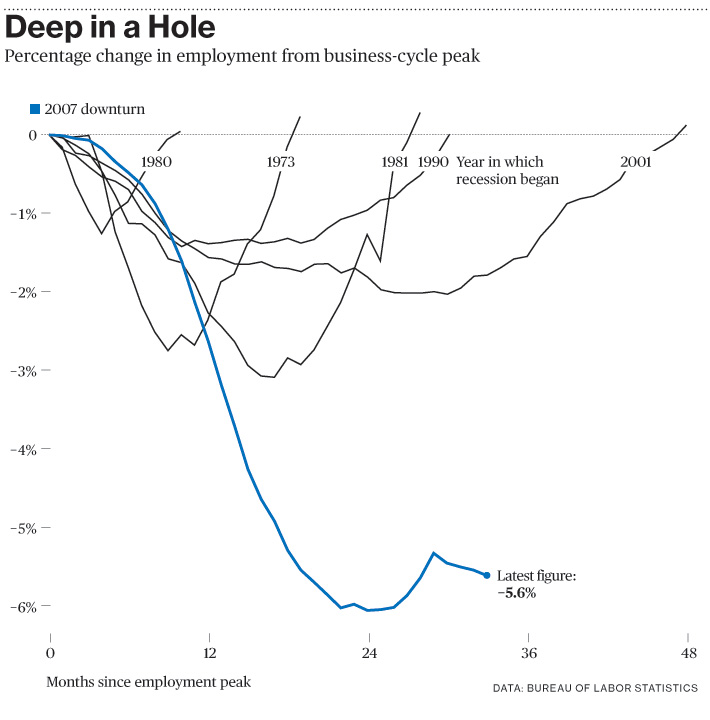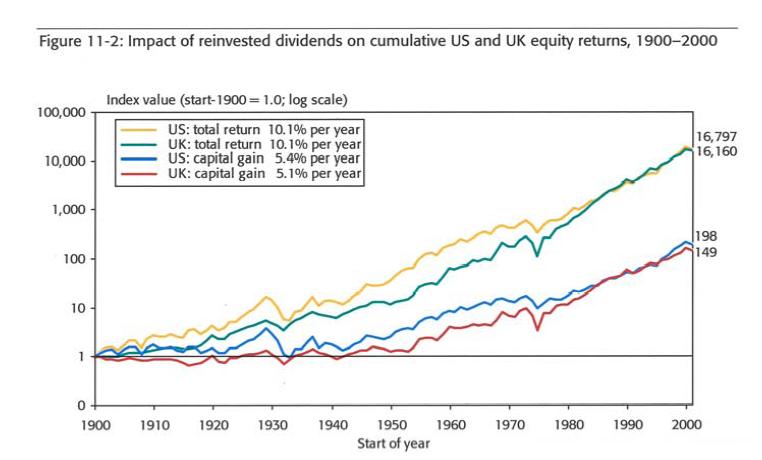The official unemployment rate in September stood at 9.6%. The total number of unemployed persons was 14.8 million. The number of long-term unemployed (27 weeks and more) stood at 6.1 million. Billions of dollars in bailouts have saved the large banks and the economy from complete collapse but the $14.5 U.S. economy is unable to recover strongly.
The unemployment rate is stubbornly high compared to previous recessions. The following graphic from a Bloomberg BusinessWeek report illustrates the uniqueness of the current economic downturn:
Click to Enlarge
Source: The U.S. Economy: Stuck in Neutral, Bloomberg BusinessWeek
From the report:
“Complicating matters, the hole from which the U.S. economy needs to escape is unusually deep. As the accompanying chart shows, employment in September remained 5.6 percent below its December 2007 peak. In four of the five previous recessions going back to 1970, employment had bounced back to new highs by this stage. The only exception was the aftermath of the 2001 recession, in which employment was 1.8 percent below its pre-recession peak at this stage.”
Most people would agree that the economy will eventually recover.However in order to stimulate demand and pull the economy out of the current slump, unusual and bold policy measures are needed.


